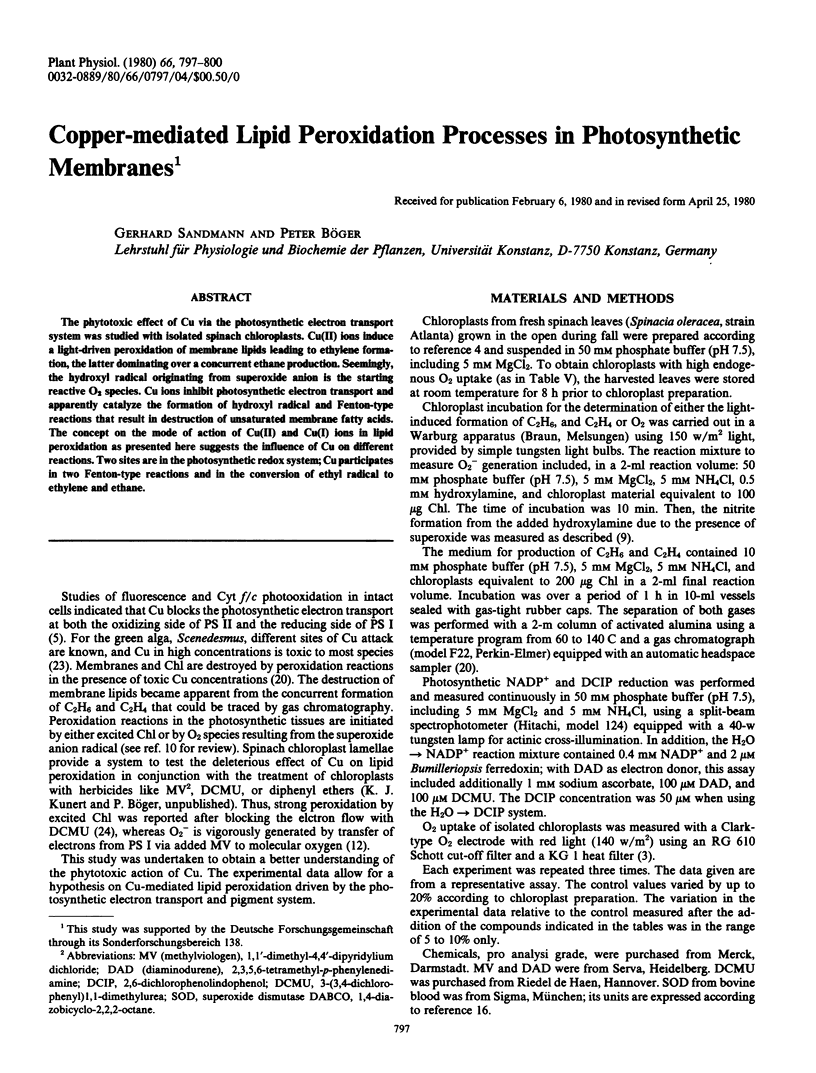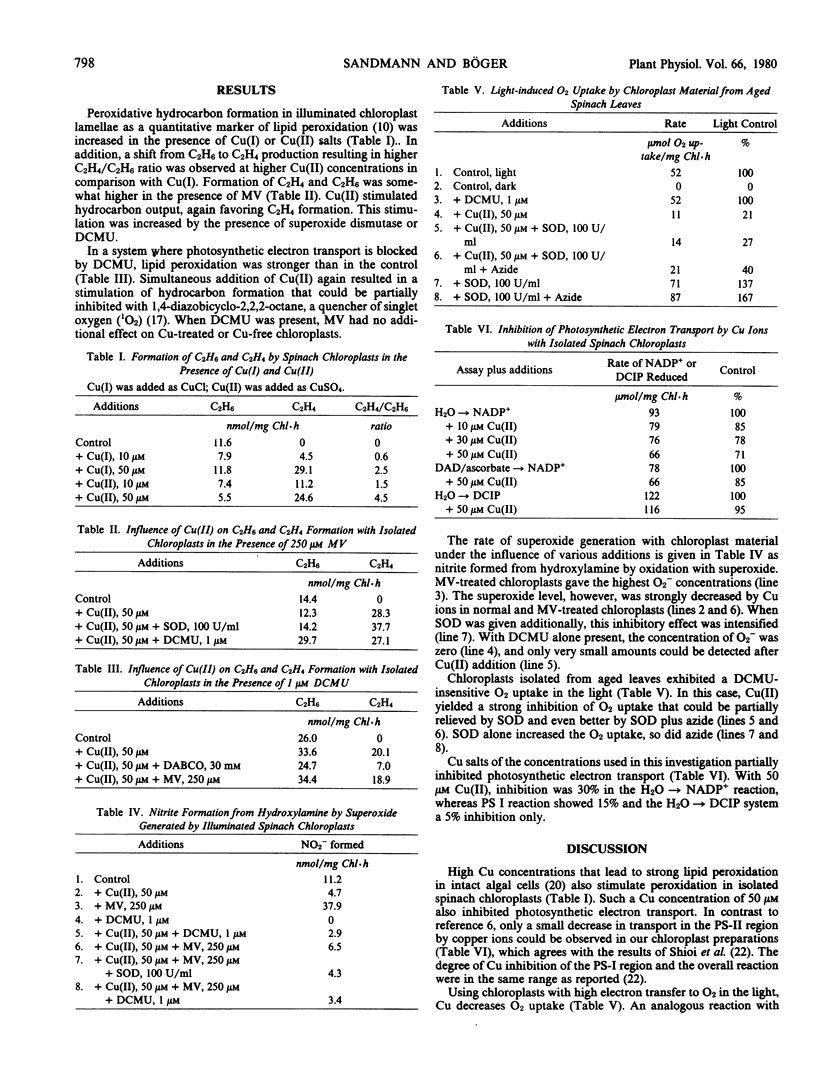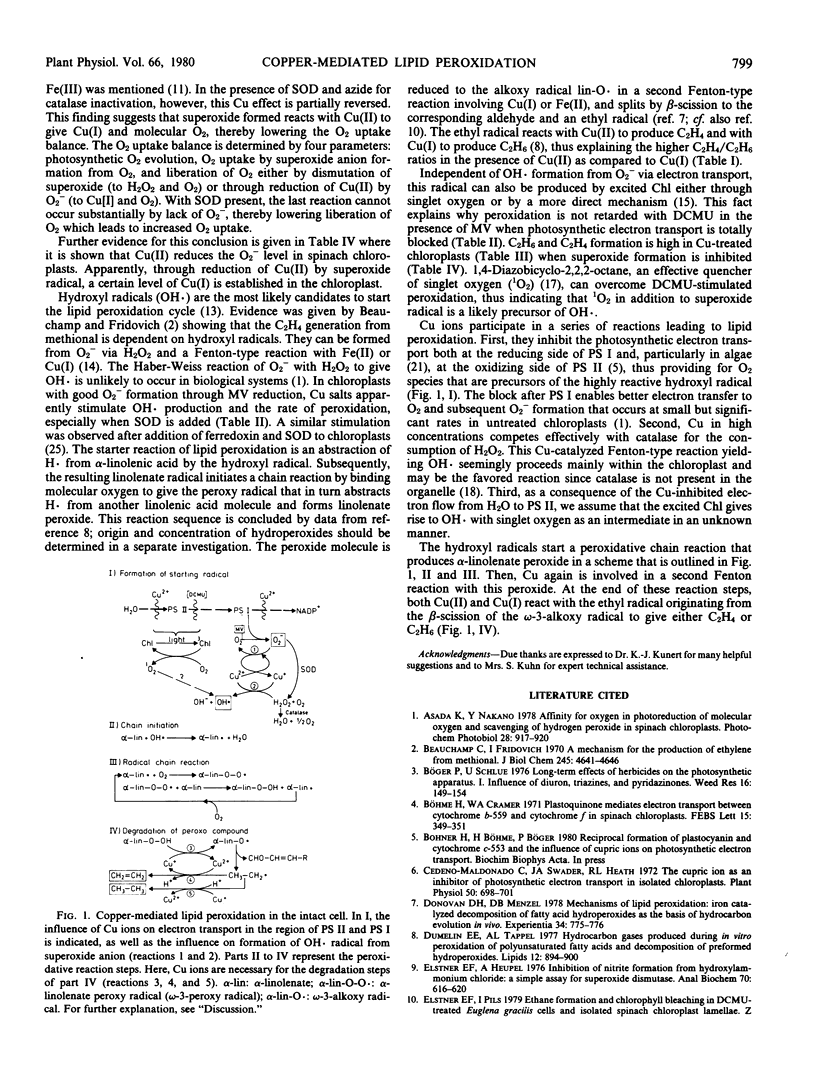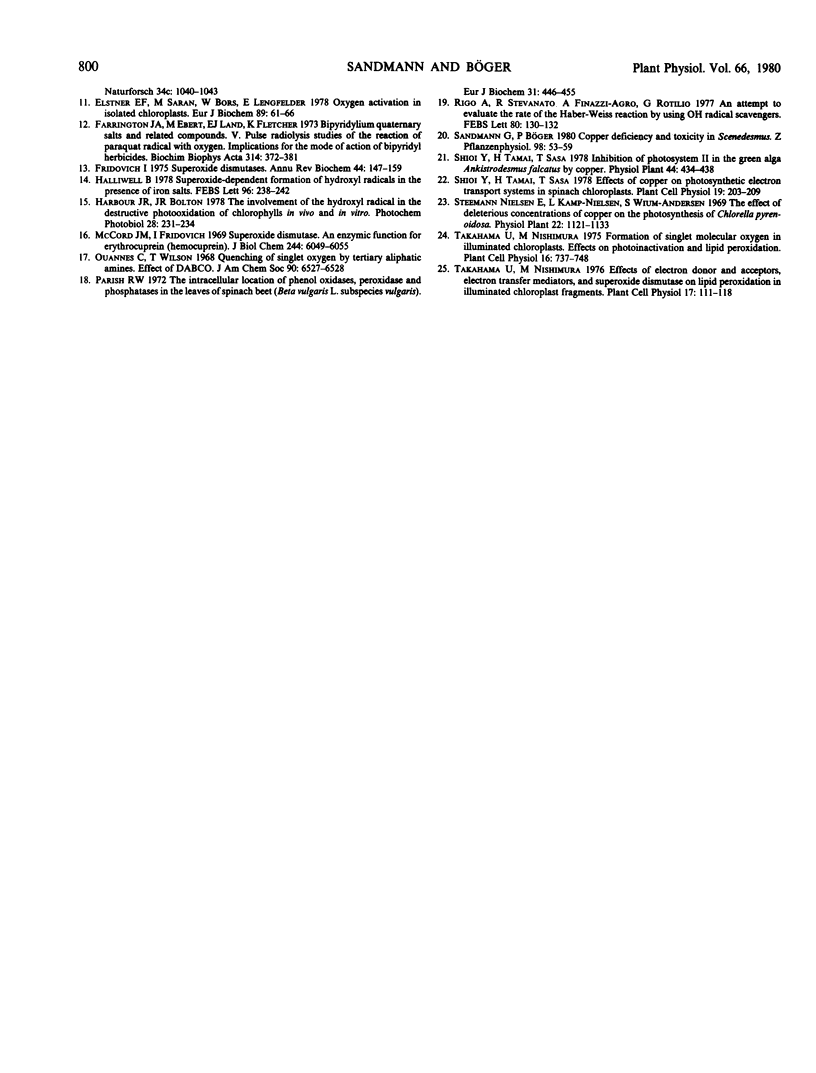Abstract
The phytotoxic effect of Cu via the photosynthetic electron transport system was studied with isolated spinach chloroplasts. Cu(II) ions induce a light-driven peroxidation of membrane lipids leading to ethylene formation, the latter dominating over a concurrent ethane production. Seemingly, the hydroxyl radical originating from superoxide anion is the starting reactive O2 species. Cu ions inhibit photosynthetic electron transport and apparently catalyze the formation of hydroxyl radical and Fenton-type reactions that result in destruction of unsaturated membrane fatty acids. The concept on the mode of action of Cu(II) and Cu(I) ions in lipid peroxidation as presented here suggests the influence of Cu on different reactions. Two sites are in the photosynthetic redox system; Cu participates in two Fenton-type reactions and in the conversion of ethyl radical to ethylene and ethane.
Full text
PDF



Selected References
These references are in PubMed. This may not be the complete list of references from this article.
- Beauchamp C., Fridovich I. A mechanism for the production of ethylene from methional. The generation of the hydroxyl radical by xanthine oxidase. J Biol Chem. 1970 Sep 25;245(18):4641–4646. [PubMed] [Google Scholar]
- Böhme H., Cramer W. A. Plastoquinone mediates electron transport between cytochrome b-559 and cytochrome f in spinach chloroplasts. FEBS Lett. 1971 Jul 8;15(5):349–351. doi: 10.1016/0014-5793(71)80331-9. [DOI] [PubMed] [Google Scholar]
- Cedeno-Maldonado A., Swader J. A. The cupric ion as an inhibitor of photosynthetic electron transport in isolated chloroplasts. Plant Physiol. 1972 Dec;50(6):698–701. doi: 10.1104/pp.50.6.698. [DOI] [PMC free article] [PubMed] [Google Scholar]
- Donovan D. H., Menzel D. B. Mechanisms of lipid peroxidation: iron catalyzed decomposition of fatty acid hydroperoxides as the basis of hydrocarbon evolution in vivo. Experientia. 1978 Jun 15;34(6):775–776. doi: 10.1007/BF01947320. [DOI] [PubMed] [Google Scholar]
- Dumelin E. E., Tappel A. L. Hydrocarbon gases produced during in vitro peroxidation of polyunsaturated fatty acids and decomposition of preformed hydroperoxides. Lipids. 1977 Nov;12(11):894–900. doi: 10.1007/BF02533308. [DOI] [PubMed] [Google Scholar]
- Elstner E. F., Heupel A. Inhibition of nitrite formation from hydroxylammoniumchloride: a simple assay for superoxide dismutase. Anal Biochem. 1976 Feb;70(2):616–620. doi: 10.1016/0003-2697(76)90488-7. [DOI] [PubMed] [Google Scholar]
- Elstner E. F., Saran M., Bors W., Lengfelder E. Oxygen activation in isolated chloroplasts. Mechanism of ferredoxin-dependent ethylene formation from methionine. Eur J Biochem. 1978 Aug 15;89(1):61–66. doi: 10.1111/j.1432-1033.1978.tb20896.x. [DOI] [PubMed] [Google Scholar]
- Farrington J. A., Ebert M., Land E. J., Fletcher K. Bipyridylium quaternary salts and related compounds. V. Pulse radiolysis studies of the reaction of paraquat radical with oxygen. Implications for the mode of action of bipyridyl herbicides. Biochim Biophys Acta. 1973 Sep 26;314(3):372–381. doi: 10.1016/0005-2728(73)90121-7. [DOI] [PubMed] [Google Scholar]
- Fridovich I. Superoxide dismutases. Annu Rev Biochem. 1975;44:147–159. doi: 10.1146/annurev.bi.44.070175.001051. [DOI] [PubMed] [Google Scholar]
- Halliwell B. Superoxide-dependent formation of hydroxyl radicals in the presence of iron salts. Its role in degradation of hyaluronic acid by a superoxide-generating system. FEBS Lett. 1978 Dec 15;96(2):238–242. doi: 10.1016/0014-5793(78)80409-8. [DOI] [PubMed] [Google Scholar]
- McCord J. M., Fridovich I. Superoxide dismutase. An enzymic function for erythrocuprein (hemocuprein). J Biol Chem. 1969 Nov 25;244(22):6049–6055. [PubMed] [Google Scholar]
- Rigo A., Stevanato R., Finazzi-Agro A., Rotilio G. An attempt to evaluate the rate of the Haber-Weiss reaction by using OH radical scavengers. FEBS Lett. 1977 Aug 1;80(1):130–132. doi: 10.1016/0014-5793(77)80422-5. [DOI] [PubMed] [Google Scholar]


